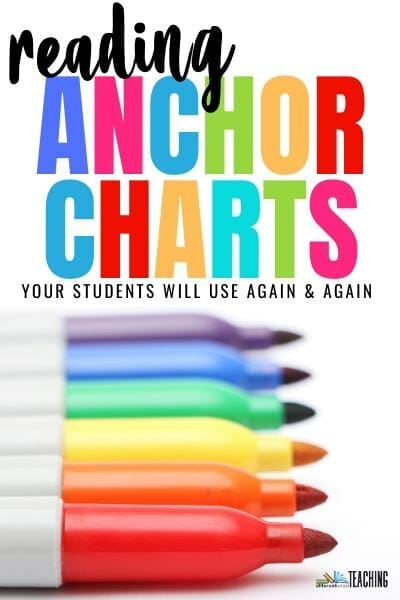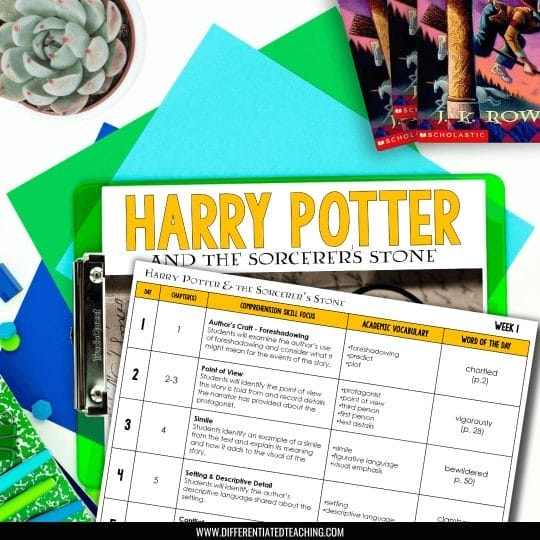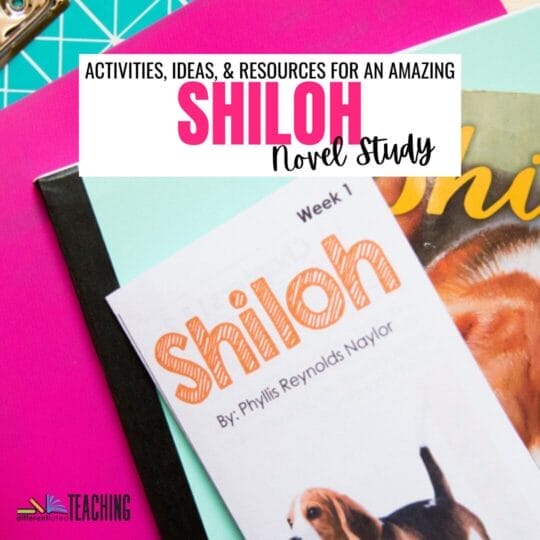30 Reading Anchor Charts Your Students Will Actually Use
Anchor charts are a great tool for helping students remember routines and apply the strategies you’ve taught in class. Whether they’re helping students activate their schema, recording learning, or outlining strategies that students can use on their own, these visual resources are a must-have for elementary & middle school classrooms. Today I want to share a few of my favorite reading anchor charts that I’ve seen for helping students master skills & recall strategies.

Anchor Charts to Help Students Break Down & Organize Their Thinking
Note-taking Anchor Charts
When I worked with older students, I always had trouble with students wanting to highlight EVERYTHING when taking notes from a non-fiction text. I love the first anchor chart from Terra Shiffer because it helps solve that problem. The second anchor chart, from Mrs. O Reads Books, is another great option.
I think it’s great because it outlines WHAT they should look for when reading. It also gives them a way to code the most important information, making it easy to refer back to. I can’t wait to try this one the next time I’m working on notating non-fiction.
It can be easy to forget that annotating text and taking notes is a new skill and requires some serious higher-level synthesis. Students need to be taught how to do this and they need the visual reminders to be able to implement it independently. This anchor chart from Mrs. O Reads Books is a perfect classroom reference.
Responding to Literature – Citing the Text
So many students know what they want to say but struggle to get the ideas out on paper. Sentence stems can be a huge help for struggling readers and writers. They’re also a great scaffold for your students who are learning English. Here are two examples of what this can look like in the classroom:
Even if students don’t need sentence stems, you may consider outlining the steps needed for a high-quality response like this one. It offers a great way for students to check to ensure they have a complete answer.
Anchor Charts to Support Reading Strategies & Skills
While mini-lessons are great for introducing important reading comprehension skills and strategies. However, many students need more than one exposure to master the content. Visuals, like anchor charts, can be a great way to help keep these fresh in your students’ minds.
I love interactive anchor charts for reading. It allows me to reuse the same chart across multiple lessons instead of creating something new repeatedly. I also find that students are more engaged when the anchor chart offers some hands-on opportunities for engagement.
Retelling Anchor Chart
I love anchor charts that give a visual but provide a strategy students can use beyond the classroom walls. This retelling anchor chart from The Teacher with the Owl Tattoo is perfect for that! Eventually, students will internalize these steps and can move toward using only their hands or not needing any cueing system.
Main Idea
Main idea is a challenging skill for elementary students. I love that the first anchor chart, from The Animated Teacher, is interactive so you can use it repeatedly. I always have to teach multiple mini-lessons on this skill. The second anchor chart, from Jessica Tobin over at The Elementary Nest, is another great option.
Sometimes it is nice to have an anchor chart that models graphic organizers students might see on assessments or those that they may want to create to help them record their thinking. This interactive anchor chart captures that option perfectly! I really love this one.
Anchor Charts for Summarizing
There are a couple of different popular formats for summarizing. While many classrooms are moving toward the SWBST method, I prefer the three-sentence format because it more closely aligns with what kids see on state testing and it can work for fiction & nonfiction texts.
Cause & Effect Anchor Charts
There tend to be fewer interactive cause & effect anchor charts. However, I do love the idea of making a book-specific version during a mini-lesson. I think some of the other charts might be better for introducing the concept and posting to help students recall the skill. No matter which style you pick, these will all make a great classroom visual.
Point of View
If you’re looking for great anchor charts for point of view, look no further than The Elementary Nest. Both of my favorites were created by Jessica Tobin, the author of the site. I love the visual the first provides, but I am a sucker for interactive anchor charts so I love the second option for allowing students to get hands-on with the chart during reading.
Character Analysis – Character Traits & Change Across Time
I love teaching character traits and analysis. This is one skill that requires an anchor chart, especially if you’re looking at change across time. Here are a few of my favorite anchor charts for this skill.
After my students get the hang of the skill, I love finding ways to incorporate longer texts, like the novel Charlotte’s Web, so that students have to dive into the text to look for causal factors. In fact, I even created some free resources to help with these lessons. You can read more and grab the free character development resources here.
Inferring & Drawing Conclusions
Both inferring and drawing conclusions are SO hard for students to master, and I’ve found anchor charts are an absolute must-have to remind them of the process & give interactive practice.
Here are a few cool anchor charts I found on Pinterest that I want to try the next time I introduce these skills to students.
Theme
Identifying the theme can be a challenge for many students because it requires synthesizing an entire story down to it’s most basic idea. These two anchor charts are perfect for helping students remember what the theme is and categorize the books they’ve been reading according to common themes in literature.
Author’s Purpose
Identifying the author’s purpose is taught in many different ways. While some teachers use the P-I-E acronym, other strategies are also gaining traction as students are being asked to think more critically about what the author is trying to convey through their writing.
Need more ELA anchor chart inspiration?
Want to see more amazing language arts anchor charts? Click here to see my Language Arts Anchor Chart board on Pinterest.







